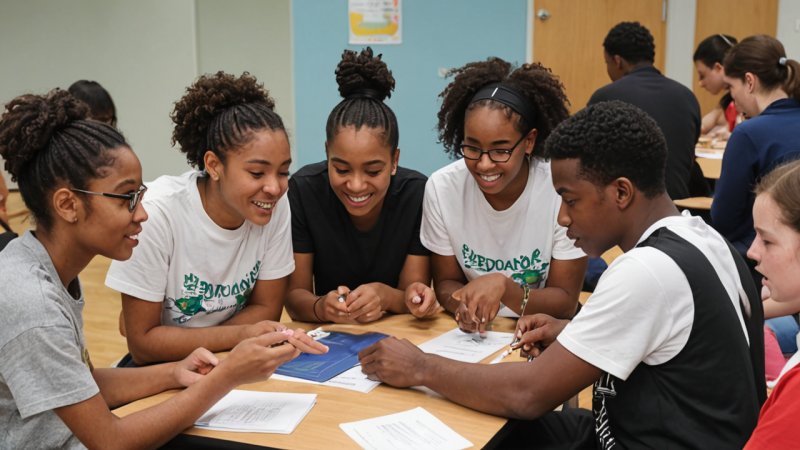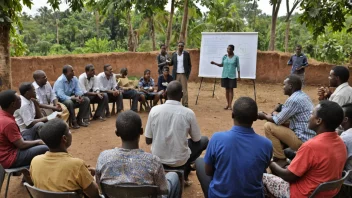In an era where youth are increasingly facing mental and physical health challenges, engaging them in health and wellbeing programs has never been more crucial. These programs not only provide essential resources and education but also empower young individuals to take charge of their health. By fostering a culture of participation, we can help youth develop healthy habits, build resilience, and create a supportive community that champions overall wellbeing. This article will explore various strategies to engage youth effectively in health and wellbeing initiatives, highlighting successful programs, the importance of mentorship, and the role of technology in outreach.
Understanding the Importance of Youth Engagement
Engaging youth in health and wellbeing programs is vital for several reasons. Firstly, these programs help instill healthy habits at a formative age, which can lead to long-term benefits in physical and mental health. Secondly, youth engagement fosters a sense of ownership and responsibility, encouraging young people to actively participate in their communities. Moreover, involving youth in program design and implementation can lead to more relevant and effective initiatives that resonate with their peers.
Successful Programs Around the Globe
Many organizations worldwide have successfully engaged youth in health and wellbeing programs. For instance, the Youth Empowerment Program in South Africa focuses on mental wellbeing and provides training for young leaders to facilitate peer support groups. Similarly, the “Healthy Futures” initiative in Canada combines physical activities with nutritional education, encouraging youth to make healthier lifestyle choices. These programs demonstrate that when youth are given the tools and support they need, they can become advocates for their health and the health of their communities.
Strategies for Engagement
To effectively engage youth in health and wellbeing programs, consider the following strategies:
- Peer Leadership: Empowering youth to take on leadership roles not only increases their engagement but also fosters a sense of responsibility. Training young leaders to facilitate workshops or peer support groups can create a relatable environment for their peers.
- Interactive Activities: Incorporating interactive and hands-on activities can make programs more appealing. Workshops that include creative arts, sports, or team-building exercises can help break down barriers and encourage participation.
- Utilizing Technology: In today’s digital world, technology can be a powerful tool for engagement. Using social media platforms, apps, and online forums can help reach youth where they are most active, providing them with resources and a space to connect with others.
- Cultural Relevance: Programs that reflect the cultural backgrounds of participants are more likely to resonate with youth. Engaging local leaders and incorporating culturally relevant content can help bridge gaps and foster a sense of belonging.
The Role of Mentorship
Mentorship plays a significant role in engaging youth in health and wellbeing programs. By connecting young individuals with mentors who can provide guidance, support, and encouragement, programs can create a nurturing environment that promotes personal growth. Mentors can share their experiences, offer advice on overcoming challenges, and inspire youth to pursue their health goals. Establishing mentorship opportunities within programs can enhance participation and retention, as youth are more likely to stay engaged when they feel supported.
Building a Supportive Community
A key aspect of successful youth engagement is the creation of a supportive community. Programs should encourage collaboration among participants, fostering friendships and connections that extend beyond the program itself. Organizing community events, group challenges, and social gatherings can help build a sense of belonging and camaraderie. Furthermore, involving families and caregivers in health and wellbeing initiatives can strengthen the support system for youth, making it easier for them to adopt healthier habits.
Measuring Impact and Success
To ensure that health and wellbeing programs remain effective and engaging, it is essential to measure their impact. Gathering feedback from participants can provide valuable insights into what works and what needs improvement. Surveys, focus groups, and regular check-ins can help programs adapt to the evolving needs of youth. Additionally, tracking health outcomes, such as physical activity levels and mental wellbeing, can demonstrate the effectiveness of the initiatives and encourage further engagement.
Conclusion
Engaging youth in health and wellbeing programs is a powerful way to empower the next generation and foster a culture of health within communities. By implementing strategies that emphasize peer leadership, interactive learning, and mentorship, we can create meaningful experiences that resonate with young individuals. Moreover, building a supportive community and measuring the impact of our efforts will ensure that these programs continue to thrive. As we work together to inspire youth to take charge of their health, we pave the way for a brighter, healthier future for all.






